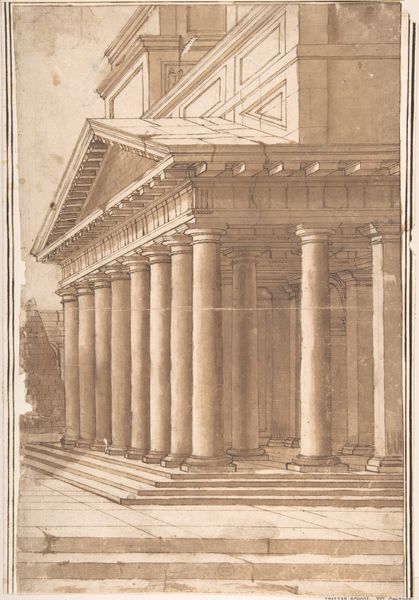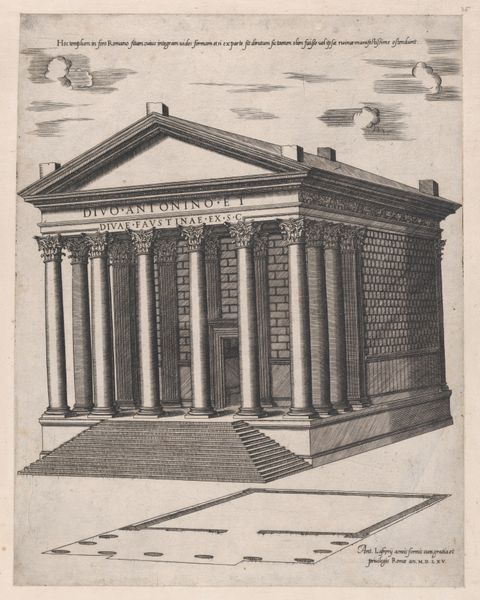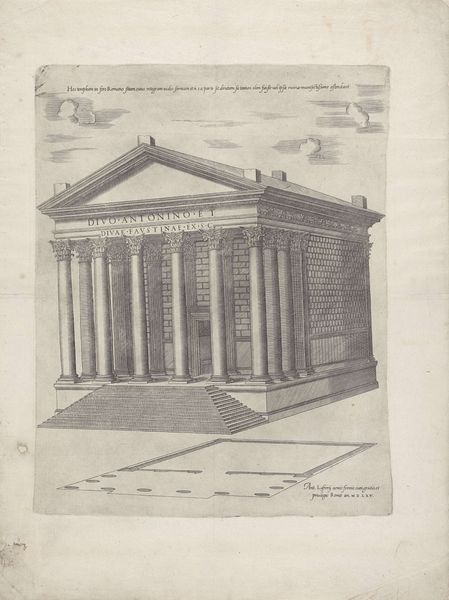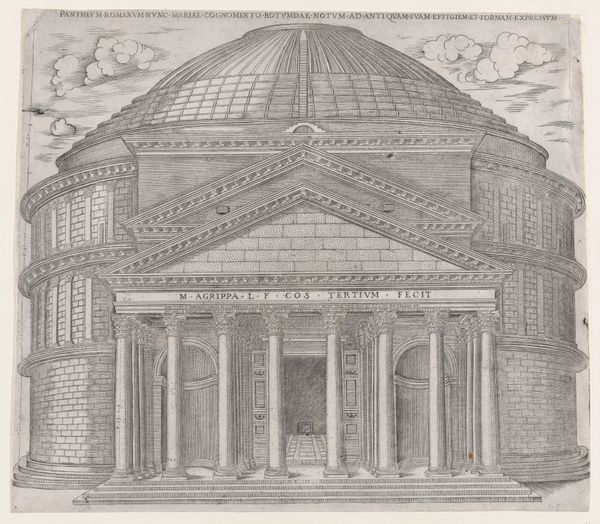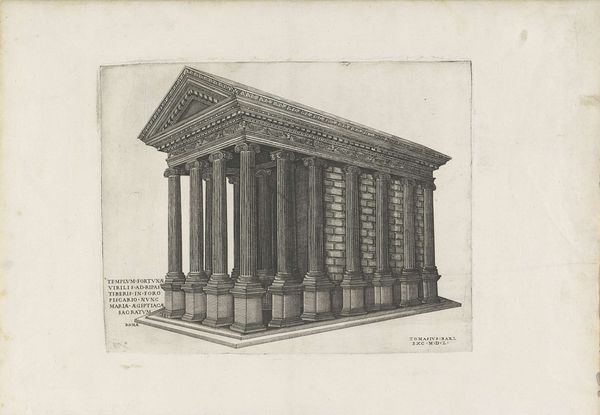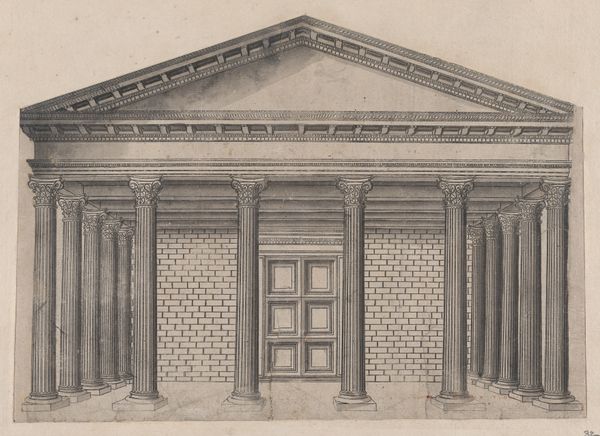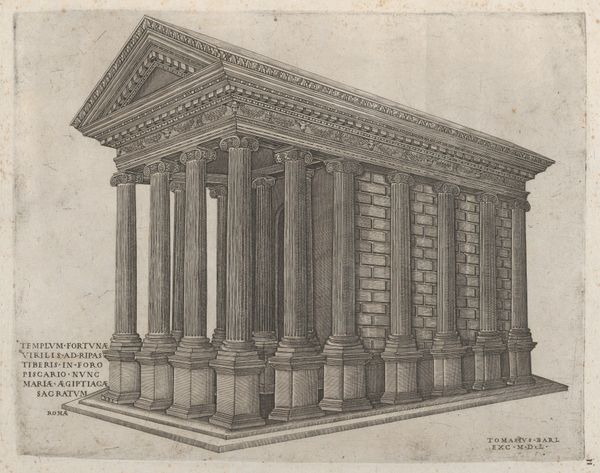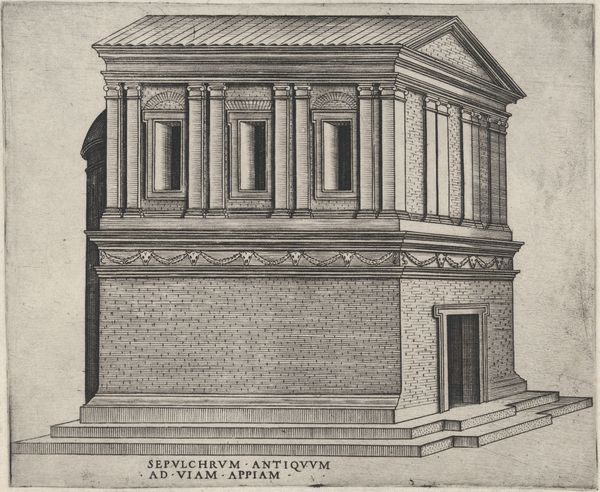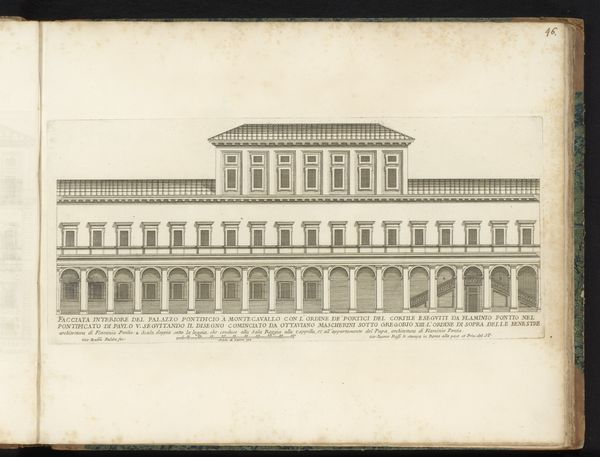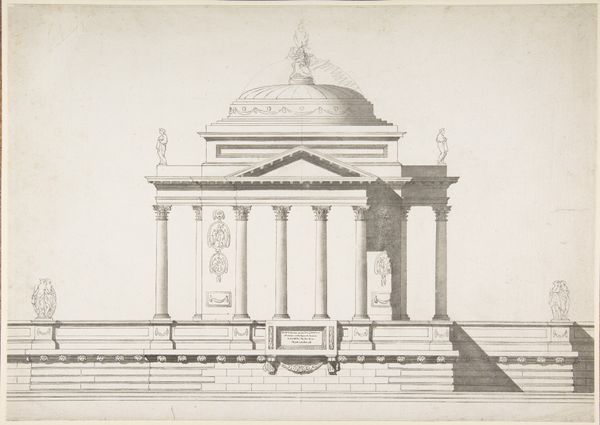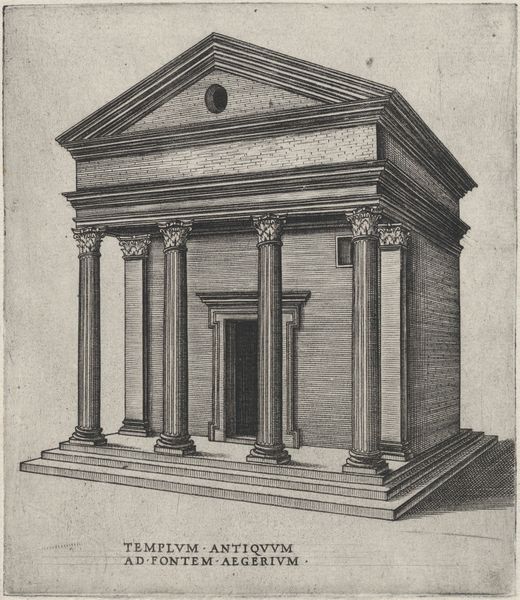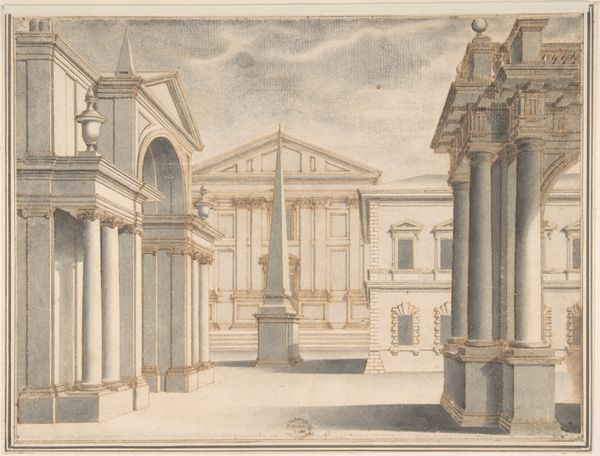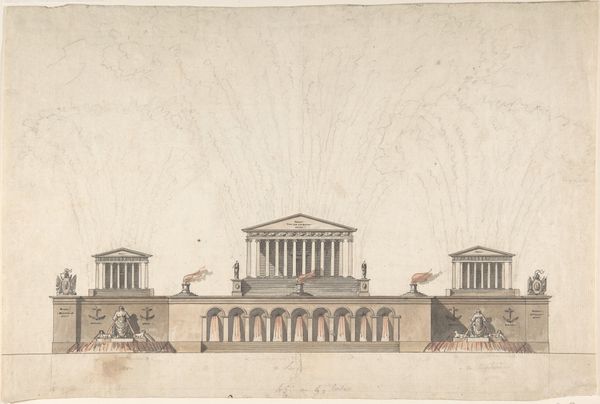
print, engraving, architecture
# print
#
landscape
#
perspective
#
11_renaissance
#
line
#
cityscape
#
history-painting
#
italian-renaissance
#
engraving
#
architecture
#
realism
Dimensions: height 284 mm, width 320 mm
Copyright: Rijks Museum: Open Domain
This print, "Temple of Antoninus and Faustina in Rome," was made by an anonymous artist using engraving techniques. The fine lines that define the architecture are achieved through the careful use of tools to cut into a metal plate, which is then inked and pressed onto paper. Engraving, like other printmaking processes, played a crucial role in disseminating knowledge and visual culture. This print makes the temple accessible to a wider audience, documenting the architectural marvel of the Roman Empire. The artist’s skill in capturing the intricate details of the temple speaks to the labor-intensive process involved, transforming metal and paper into a lasting image. The precision of the engraving also mirrors the precision and skill required to construct the temple. Considering the materials, making, and social context of both the temple and the print deepens our understanding of the artistry and labor involved in their creation.
Comments
No comments
Be the first to comment and join the conversation on the ultimate creative platform.
